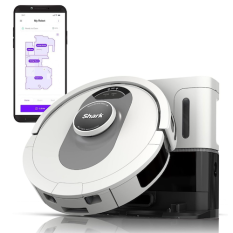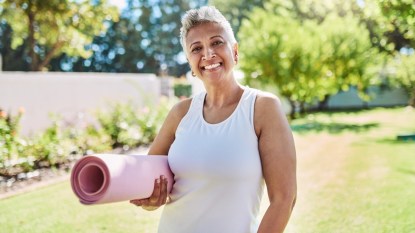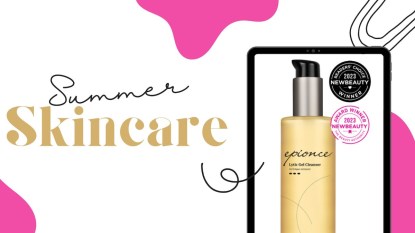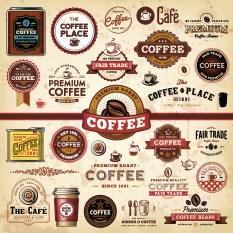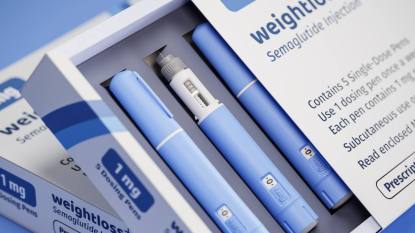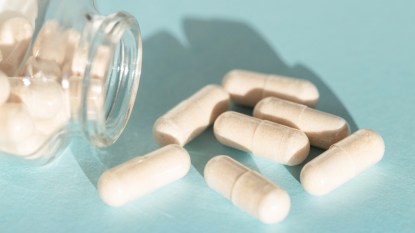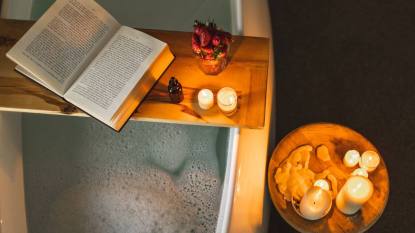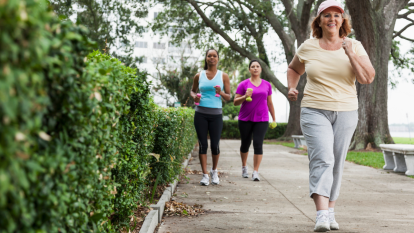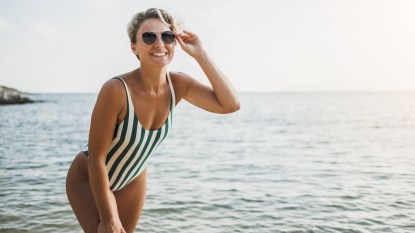‘I Cured My Obstructive Sleep Apnea!’ How Disco Dancing Helped 1 Woman Beat This Condition
Read more about her unique story and learn other tips on how to get a good night's sleep
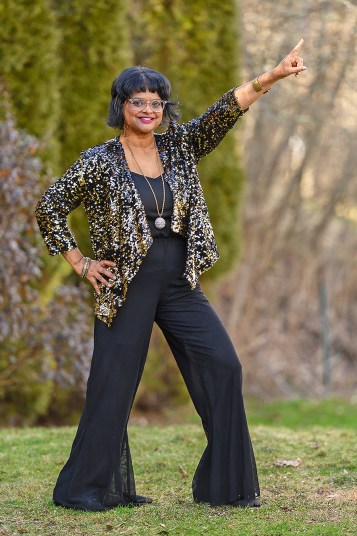
Fatigue and mental fogginess are all too commonplace, particularly as the day unfolds. Obstructive sleep apnea can be the cause, particularly in menopausal women — but CPAP machines, considered the gold standard for treatment, don’t always work. However, studies have shown that exercise can help. Sarah Souri, 58, rid herself of obstructive sleep apnea when her CPAP wasn’t effective — and her cure was her passion for disco dancing!
What is obstructive sleep apnea?
Obstructive sleep apnea (OSA) is often thought of as a man’s disease, but it’s surprisingly common in menopausal women. A drop in estrogen is a factor, and carrying even just 10 extra pounds can raise the risk, says Michael B. Polsky, M.D., a sleep specialist at Pulmonary Associates of Richmond in Virginia. “Fat deposits in the neck can reduce air flow, triggering episodes where breathing is interrupted.” Indeed, a 2022 study links the drop in estrogen to the condition, in which tissue in the throat blocks the airway during sleep, causing breaks in breathing that lead to “micro arousals.”

How to cure sleep apnea
About half of people who are prescribed the gold-standard treatment stop using it. The treatment, a continuous positive airway pressure, or CPAP, device keeps the airway open, but many find it loud and uncomfortable, making it tough to sleep.
See also: Doctors Reveal the Best Sleep Apnea Self-Care Tips + the 1 Thing You Should Never Do
The good news: “Dancing, or any vigorous exercise, can have a significant impact on improving OSA,” says Dr. Polsky. That’s because exercise can tone the muscles responsible for healthy breathing, eliminating the need for CPAP, he explains. And Brazilian researchers found that aerobic exercise can reduce sleep apnea episodes by up to 32% and daytime sleepiness by 28%. To experience the benefits, aim for 20 to 30 minutes of brisk aerobic exercise four to five times a week.
Disco dancing sleep apnea success story: Sarah Souri, 58
“Where are those notes,” wondered Sarah, a licensed psychotherapist, wife and empty-nester in Pittsburgh, as she panicked trying to prepare for a client meeting. She hadn’t slept well the night before, or any night in recent memory, and the lack of a good night’s rest was catching up to her. “I constantly felt like I was living life in a daze,” she recalls.
Sarah was tired all the time because of sleep apnea
“For years, I would run into a late-afternoon brick wall of fatigue,” says Sarah. “Mental fogginess became commonplace, and by 2 or 3 pm most afternoons, I was so fuzzy that it was nearly impossible to function. At times, I struggled to pay attention and remember what my clients were telling me, and as a psychotherapist, concentrating on what clients are saying is vital. I began scheduling sessions as early in the day as possible, but it was often difficult. Something has to change, I told myself one day in 2020, feeling fed up with all the fog and fatigue.”
“That’s when I saw a sleep medicine doctor. He ordered a sleep study, and I found out that I had obstructive sleep apnea, a condition that occurs when you can’t breathe correctly while sleeping due to a blockage in the windpipe.”
“I was disappointed, because I knew the most common treatment is a continuous positive airway pressure, or CPAP, machine which keeps your airway open to promote more restful sleep, and I worried about the comfort and ease of use of the device.”
“Reluctantly, I began using the CPAP, but I had trouble getting used to wearing the head gear and the sound of the machine. As a result, I still wasn’t sleeping well, and the tiredness continued to impact every aspect of my life. But when I looked at photos from a wedding I attended in July 2021, it was jarring to see how apparent the extra 20 pounds I was carrying appeared in photos. That’s when I knew I had to make some changes.”
Related: This ‘Music’ Switches Your Brain Into Deep Sleep Mode Automatically, Say Sleep Docs
The surprising solution to Sarah’s sleep apnea
“Committed to getting healthy and dropping those unwanted pounds, I decided it was time to take the advice I encourage my therapy clients to follow: Take care of your health.”
“As a child of the ’70s, I have always loved disco music, so I leaned into that passion. After seeing that photo, I ramped up my focus on disco dancing as a daily form of fun exercise. My husband, Ron, and I started going to disco concerts almost every weekend, where we danced for 2 or 3 hours at a time. I also incorporated 20 to 25 minutes of disco dancing in my kitchen during my weekday lunch breaks, and I made a conscious effort to cut back on sugar.”
How dancing made a difference
“Dancing was so much fun that it didn’t feel like exercise, and often I sang along to the songs. Slowly but surely, I lost 20 pounds, but since I couldn’t adjust to the CPAP, I still wasn’t sleeping well.”
“Then, last fall, my doctor suggested switching treatment to combat the sleep apnea. He sent me for another sleep study to assess if a dental appliance was an option. Once again, I left with shocking news: My sleep apnea had greatly improved. The reason I wasn’t sleeping well was because the CPAP device was keeping me up at night. He told me I no longer needed it or any other device. I was thrilled to hear this news, and immediately I started sleeping better.”

“Today, my energy levels are high throughout the day and into the evening, and my husband and I have found that our social lives have expanded greatly, thanks to the new friends we’ve made dancing every weekend. Those social benefits warm my heart and fuel my soul. I feel physically and mentally healthier than I ever have and I’m sleeping more soundly at night — consistently logging seven uninterrupted hours. I’ll never stop dancing!”
MUST-READ: Discover The Best Magnesium for Sleep and Wake Up Happy!
Side-sleeping prevents wake-ups for sleep apnea sufferers
Is the key to a good night’s sleep a matter of rolling over? Maybe! Researchers at the Sleep Research Society found that apnea symptoms were 100% worse in people who slept on their back versus on their side. Why? While sleeping on your back, the tongue and larynx can obstruct breathing, but sleeping on your side keeps airways open. For even better sleep, snooze on your right: In a National Institutes of Health study of apnea sufferers, those who did so had fewer wake-ups than those sleeping on their left. To avoid rolling onto your back, try pinning a sock stuffed with two tennis balls to the back of your pajamas.

More inspirational stories of real women:
One Veteran Found Her Way Back to Her K9 Partner — The Inspiring True Story
105-Year-Old Woman Receives Her College Master’s Degree From Stanford After 83 Years
This content is not a substitute for professional medical advice or diagnosis. Always consult your physician before pursuing any treatment plan.

